In service September 13, 1960 Weight 1,198 lb (543 kg) Wingspan 1.65 m Retired 1978 First flight 1958 | Produced November 1957 Length 3.94 m Introduced 1960 Operational range 716,158 m Manufacturer McDonnell Aircraft | |
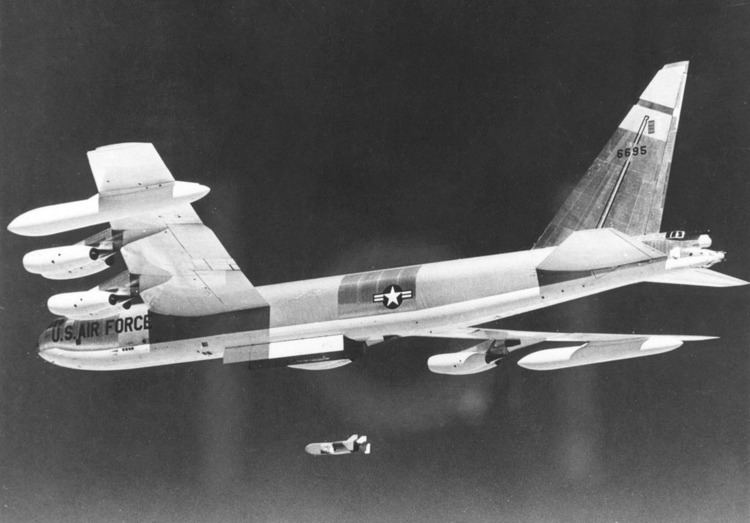 | ||
Height 2 ft 1 in (0.66 m) (wings folded); 3 ft 3 in (1.02 m) (wings unfolded). | ||
Mcdonnell adm 20 quail decoy
The McDonnell ADM-20 Quail was a subsonic, jet powered, air-launched decoy cruise missile built by McDonnell Aircraft Corporation. The Quail was designed to be launched by the Boeing B-52 Stratofortress strategic bomber and its original United States Air Force designation was GAM-72 (GAM standing for Guided Aircraft Missile).
Contents
- Mcdonnell adm 20 quail decoy
- Mcdonnell adm 20 quail a b 52 air launched decoy cruise missile
- Development
- Design
- Operational history
- Variants
- Operator
- Survivors
- References

Mcdonnell adm 20 quail a b 52 air launched decoy cruise missile
Development
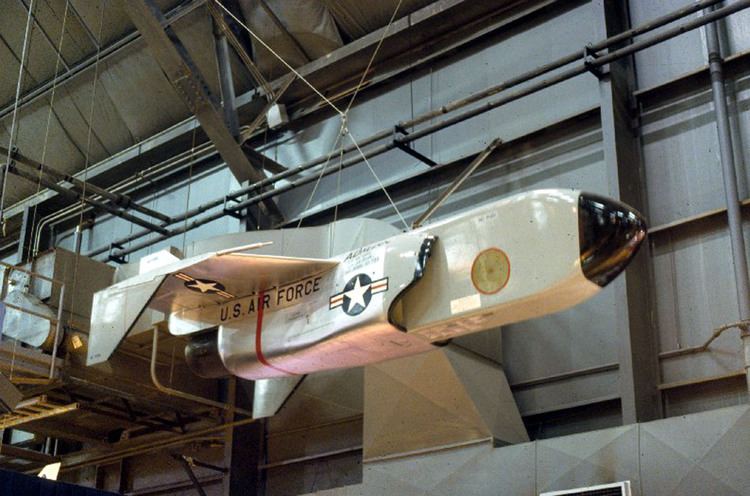
In 1955 the USAF started a major effort to construct decoy missiles. The goal of this effort was to improve the ability of strategic bombers to penetrate air-defense systems. The projects initiated under this effort included the MX-2223 which produced the XSM-73 Goose a long range ground-launched jet-powered, decoy cruise missile, MX-2224 which produced the XGAM-71 Buck Duck an air-launched rocket powered decoy missile to equip the Convair B-36.
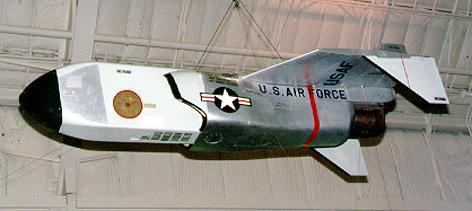
The USAF was at the same time developing the XQ-4 as a supersonic target drone to support the Bomarc Missile Program. A requirement was established by the USAF Power Plant Laboratory at Wright-Patterson Air Force Base to support follow-on production of the XQ-4. This requirement called for a small jet engine in the 2,000 lbf (8.9 kN) thrust class with a high thrust-to-weight ratio of 10:1. On November 28, 1954 General Electric was awarded a USAF development contract to construct the XJ-85-GE-1. The USAF designated the XJ85 project MX-2273.
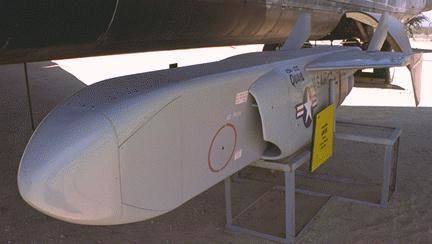
During April 1955, the USAF began a program to develop a short range air-launched decoy missile to simulate the radar cross section of a bomber. On January 18, 1956, the USAF released General Operational Requirement (GOR) 139.
Design
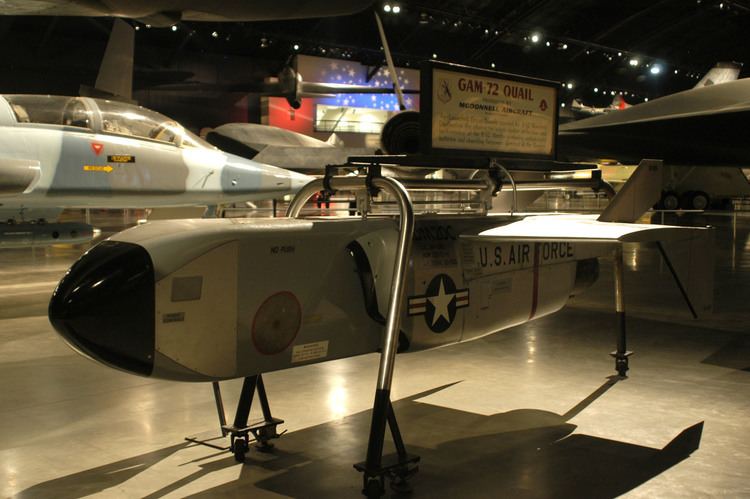
McDonnell Aircraft Corporation submitted a design which included a cropped-delta-wing decoy constructed largely of fiberglass and carried internally within a B-52. The following month on February 1, 1956, the McDonnell Aircraft Corporation was awarded a contract to develop Weapon System 122A which included the GAM-72 Green Quail missile. In June 1956 General Electric was selected as the engine contractor for the GAM-72. Guidance components were built by Summers Gyroscope and the countermeasures equipment by Ramo-Wooldridge Corporation.

The GAM-72 was designed with a high-mounted delta wing and no horizontal stabilizer. A slab-sided fuselage and two sets of vertical stabilizers contributed to the GAM-72s ability to simulate the radar cross section of a bomber. Initially the GAM-72 was powered by a YJ85-GE-3. This jet engine produced 2,450 lbf (10.9 kN) of thrust with a thrust-to-weight ratio goal of (6:1).
The GAM-72s guidance system could be pre-programmed on the ground to execute two turns and one speed change during a flight time of 45 to 55 minutes. Flight duration depended on altitude. The GAM-72 was designed to operate at altitudes between 35,000 ft (10,668 m) to 50,000 ft (15,240 m) at speeds between Mach 0.75 to Mach 0.9. Range varied between 357 nm and 445 nm (661 to 716 km), also depending on altitude.
Two GAM-72s with folded wings and stabilizers were packaged together for mounting in the bomber weapons bay. Before launch the bomber's radar navigator lowered the GAM-72 using a retractable arm from the airplane's weapons bay into the slipstream below the aircraft. The wings and stabilizers of the GAM-72 were unfolded, the jet engine was started, and the missile was launched.
Flight testing of the XGAM-72 began in July 1957 at Holloman Air Force Base and the adjacent White Sands Missile Range. Initially testing involved the XGAM-72 being captively carried by a B-52. The first glide flight of the XGAM-72 occurred in November 1957. Three test launches were completed in 1957. The first successful powered flight of the XGAM-72 occurred in August 1958. This flight lasted 14 minutes and covered 103 nautical miles (191 km). A total of ten test flights occurred in 1958, seventeen flights in 1959, with the final four flights being completed in 1960. Operational testing then moved to Eglin Air Force Base, Florida, United States where the 4135th Strategic Wing launched a GAM-72 on June 8, 1960.
McDonnell Aircraft received a production contract for the GAM-72A on December 31, 1958. Reliability problems encountered during testing resulted in McDonnell replacing the J85-GE-3 with the J85-GE-7 engine in the production GAM-72A. The GAM-72A was also about 200 lb (90 kg) heavier than the GAM-72. This increase in weight when combined with a slightly smaller wing area reduced the maximum range of the GAM-72A to 402 statute miles (647 km). The first production GAM-72A flight was in March 1960. The final GAM-72A was delivered by McDonnell Aircraft on May 28, 1962. A total of 585 GAM-72A missiles were produced by McDonnell Aircraft. The inventory of GAM-72As in the USAF peaked at 492 in 1963.
During 1963 all remaining GAM-72A missiles were modified to the GAM-72B configuration.
In 1963 the GAM-72 was re-designated the ADM-20
Operational history
Although originally planned for deployment with the B-47 and the B-52, the GAM-72A was only deployed with the B-52.
The first production GAM-72A was delivered to the 4135th Strategic Wing, at Eglin Air Force Base, Florida on September 13, 1960. Initial operational capability was reached on February 1, 1961 when the first squadron of the 4135th Strategic Wing was equipped with the GAM-72A. On January 1, 1962 B-52 aircraft carried the GAM-72A decoy on airborne alert for the first time. Full operational capability was reached when the GAM-72A was deployed with the fourteenth and final B-52 squadron on April 15, 1962.
The operational version of the GAM-72 carried internal radar reflectors facing forward and to each side of the aircraft. Up to 100 lb (45 kg) of payload could be accommodated internally by the GAM-72. This internal space could be used to house a radar repeater or a chaff dispenser. An infrared burner in the tail could produce intense heat to simulate the heat signature of a bomber. The GAM-72 was not armed.
Eight GAM-72A decoys could be accommodated in the B-52s weapons bay but the normal decoy load was two.
Ground radar continued to improve, and the effectiveness of the GAM-72B, redesignated in 1963 as the ADM-20C, decreased over time. The AGM-69 Short Range Attack Missile (SRAM) allowed bombers to attack air-defense systems from a distance. By 1971, the USAF no longer considered the ADM-20C a credible decoy. The commander of the Strategic Air Command wrote the Chief of Staff of the United States Air Force "that the Quail was only slightly better than nothing." The last ADM-20C operational test was flown at Eglin Air Force Base on July 13, 1972. On June 30, 1978, the last ADM-20C came off alert status. The last ADM-20C was removed from the United States Air Force inventory on December 15, 1978.
Variants
Operator
The number of GAM-72As in service, by year:
